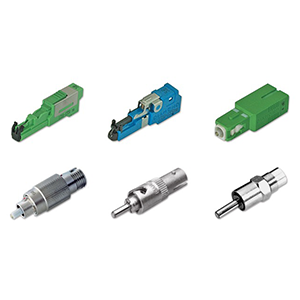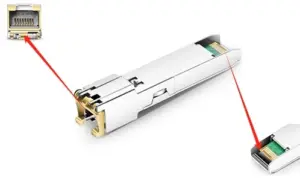MPO and MTP fiber connectors play an important role in high-density optical networks. This article will focus on comparing the similarities and differences between MPO cables and MTP cables. We will first define the structure and working principle of MPO cables and introduce their main technical parameters and performance indicators; then, we will explain the structure and working principle of MTP cables and explain their main technical parameters and performance indicators.
Next, we will focus on comparing the differences between MPO cables and MTP cables in connector design, performance indicators, compatibility, and application scenarios, and analyze the impact of these differences on installation, maintenance, signal transmission quality, system reliability, network upgrades, and management. Finally, we will provide decision-making basis for choosing MPO or MTP cables based on specific application requirements.
Basic concepts of MPO cables
Let me introduce you to the basic concepts of MPO fiber optic cables in detail.
MPO cable structure and working principle:
(1) Structural features:
- MPO cable adopts a design of multiple (usually 8 or 12) optical fibers arranged side by side
- Including key components such as precise optical fiber core alignment structure and metal shell
- Synchronous transmission of multiple optical signals is achieved through highly aligned mechanical docking
(2) Working principle:
- MPO cable can dock and connect multiple independent optical fibers in one connection.
- Using precise optical fiber positioning and shell matching, stable optical coupling is achieved.
- Therefore, bidirectional transmission of multiple optical signals (such as 8 or 12 channels) can be achieved.
In general, MPO cable adopts a unique structural design of multiple optical fibers in parallel, and realizes high-density synchronous transmission of multiple optical signals through precise mechanical docking, which is its core technical advantage.
Main technical parameters and performance indicators of MPO cables:
(1) Number of optical fiber cores
- MPO cables usually have two mainstream specifications: 8-core or 12-core
- The number of cores determines its optical transmission capacity and application scenarios
(2) Optical insertion loss
- The optical insertion loss of MPO cables is usually between 0.2-0.5dB
- The lower optical insertion loss ensures good signal transmission quality
(3) Return loss
- The return loss of MPO cables is generally in the range of 45-60dB
- The high return loss ensures good reflection characteristics of the optical signal at the connection
(4) Working temperature
- MPO cables can operate in a temperature range of -40°C to +75°C
- Suitable for outdoor and harsh environment applications
(5) Durability
- MPO cables can typically withstand 300-500 connection/disconnection cycles
- High mechanical reliability and service life
In short, MPO cables are widely used in high-speed optical communication networks due to their excellent optical performance and mechanical reliability.
Basic concept of MTP cable
Let me introduce you to the basic concept of MTP fiber optic cable.
MTP cable structure and working principle:
(1) Structural features:
- MTP cable also uses a design with multiple optical fibers (usually 12 or 24) in parallel
- It uses a proprietary MTP connector, which is similar in structure to MPO but with some differences
- It also achieves multi-channel optical signal transmission through precise fiber positioning and mechanical docking
(2) Working principle:
- MTP cable can dock and connect multiple independent optical fibers in one connection.
- Use the precise fiber positioning and shell matching provided by MTP connector to achieve stable optical coupling.
- Thus, bidirectional high-speed transmission of 12 or 24 optical signals can be achieved.
In general, MTP cable uses a proprietary connector design similar to MPO, which realizes the synchronous transmission of multiple optical signals through a high degree of fiber alignment, and is another high-density optical transmission solution.
Main technical parameters and performance indicators of MTP cables:
(1) Number of optical fiber cores
- MTP cables are usually available in two mainstream specifications: 12 cores or 24 cores
- Provide higher optical transmission capacity, suitable for high-density demand scenarios
(2) Optical insertion loss
- The optical insertion loss of MTP cables is usually between 0.2-0.5dB
- Comparable to MPO cables, ensuring good signal transmission quality
(3) Return loss
- The return loss of MTP cables is generally in the range of 45-60dB
- Comparable to MPO cables, ensuring good reflection characteristics of optical signals at the connection
(4) Working temperature
- MTP cables can operate in a temperature range of -40°C to +75°C
- Suitable for outdoor and harsh environment applications
(5) Durability
- MTP cables can typically withstand more than 500 connection/disconnection cycles
- Excellent mechanical reliability and service life
In summary, MTP cables are another high-performance alternative to MPO cables with their excellent optical performance and high-density transmission capabilities, and are widely used in high-speed optical communication networks.
Differences between MPO and MTP cables
Let me compare the main differences between MPO and MTP cables in detail:
Connector design:
- There are some differences in structure and appearance between MPO and MTP connectors
- MPO uses a square shell, while MTP uses a round shell
- MTP connectors are slightly better in precision and alignment than MPO
- This will have a certain impact on the convenience of connection, installation and maintenance, etc.
Performance indicators:
- MPO and MTP cables have little difference in indicators such as insertion loss and return loss
- But MTP is slightly better than MPO, with slightly better transmission signal quality and system reliability
- This is in the case of high signal quality requirements MPO and MTP connectors may have more advantages in applications
Compatibility:
- MPO and MTP connectors have certain differences in specifications and are not fully compatible
- A dedicated adapter or jumper is required to connect
- This may bring some complexity to network upgrades and equipment maintenance
Application scenarios:
- Both MPO and MTP are widely used in data centers, 5G, FTTx and other fields
- But MTP is more used in large data centers with dense wiring
- MPO is more suitable for small and medium-sized applications, such as buildings, campus networks, etc.
In general, although MPO and MTP differ in individual details, as high-density optical transmission solutions, the two are quite close in performance and reliability. The key is to choose the right connector type according to the needs of the specific application scenario.
Selection Principles of MPO Cable and MTP Cable
Let me summarize for you the main factors to consider when choosing between MPO cable and MTP cable.
Choose according to the application scenario:
(1) Small and medium-sized applications
- Such as small and medium-sized networks such as buildings and campuses
- MPO cables are more suitable for this application scenario
(2) Large and dense applications
- Such as large data centers, 5G base stations, etc.
- MTP cables are more suitable for this high-density, large-scale scenario
(3) Network upgrade requirements
- Such as the original system needs to be gradually upgraded and expanded
- MPO is easier to interconnect and be compatible with existing systems
Considering the scale, density and future upgrade requirements of the application scenario, it is critical to choose the right MPO or MTP cable type.
Choose according to system performance requirements:
(1) Transmission quality
- MTP cable’s optical performance indicators such as insertion loss and reflection are slightly better than MPO
- If the signal transmission quality requirements are high, MTP may be a better choice
(2) Reliability
- MTP cable’s mechanical durability and service life are better than MPO
- For applications that require higher reliability, MTP has more advantages
(3) Installation and maintenance
- MPO cable has a simpler structural design and is more convenient to install and debug
- If on-site construction conditions are limited, MPO may be more suitable
Based on the specific requirements of the application system for transmission quality, reliability, installation and maintenance, etc., choosing MPO or MTP cable can achieve the best system performance. In short, when choosing MPO or MTP cables, you should fully consider the characteristics of the actual application scenario, network scale and density requirements, as well as the specific requirements for transmission performance and reliability, and weigh the differences between the two cables to make the best choice.
Summary
Choosing the right MPO or MTP fiber optic cable is crucial to building a high-density, high-performance optical network. Our company has long focused on the research and development and production of optical communication equipment and its supporting products, and has rich industry experience. The MPO and MTP fiber optic cable products we provide have reached the industry-leading level in terms of transmission performance and reliability, and can meet your demanding needs for flexible and efficient network construction.
Whether you need to deploy MPO or MTP cables in data centers, 5G networks, or FTTx, we can provide you with customized solutions. At the same time, our professional team will provide you with a full range of technical support, including on-site surveys, solution design, and equipment installation and maintenance. Contact us now to learn more about the application of MPO and MTP cables.
MPO cable and MTP cable FAQ
An MPO (Multi-fiber Push-On) cable is a fiber optic cable terminated with a multi-fiber MPO connector.
An MTP cable is a specific type of MPO cable terminated with the MTP brand of multi-fiber connectors.
The primary difference is the brand name – MTP is a trademarked version of the MPO connector standard.
Yes, MPO and MTP connectors are mechanically interchangeable and can be mated with each other.
Both MPO and MTP cables are available in common fiber counts like 8, 12, and 24 fibers.
Yes, as long as the fiber counts and other performance specifications match, they can typically be used interchangeably.
The main difference is that MTP is a specific brand with additional quality and performance assurances from the MTP manufacturer.
They are widely used in high-density data center, telecom, and enterprise networking applications.
The processes are largely the same, as they both utilize the multi-fiber MPO-style connector system.
MTP cables may carry a slight price premium over generic MPO cables due to the brand-name certification.



